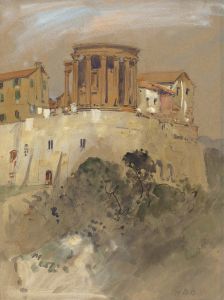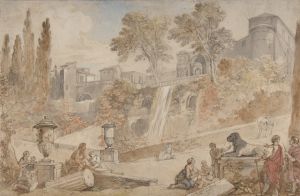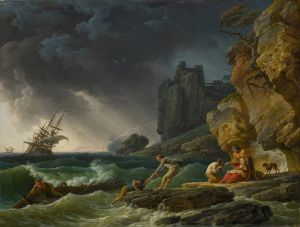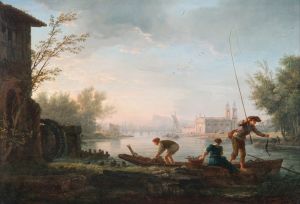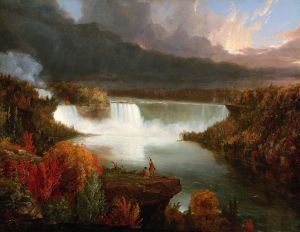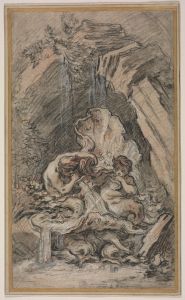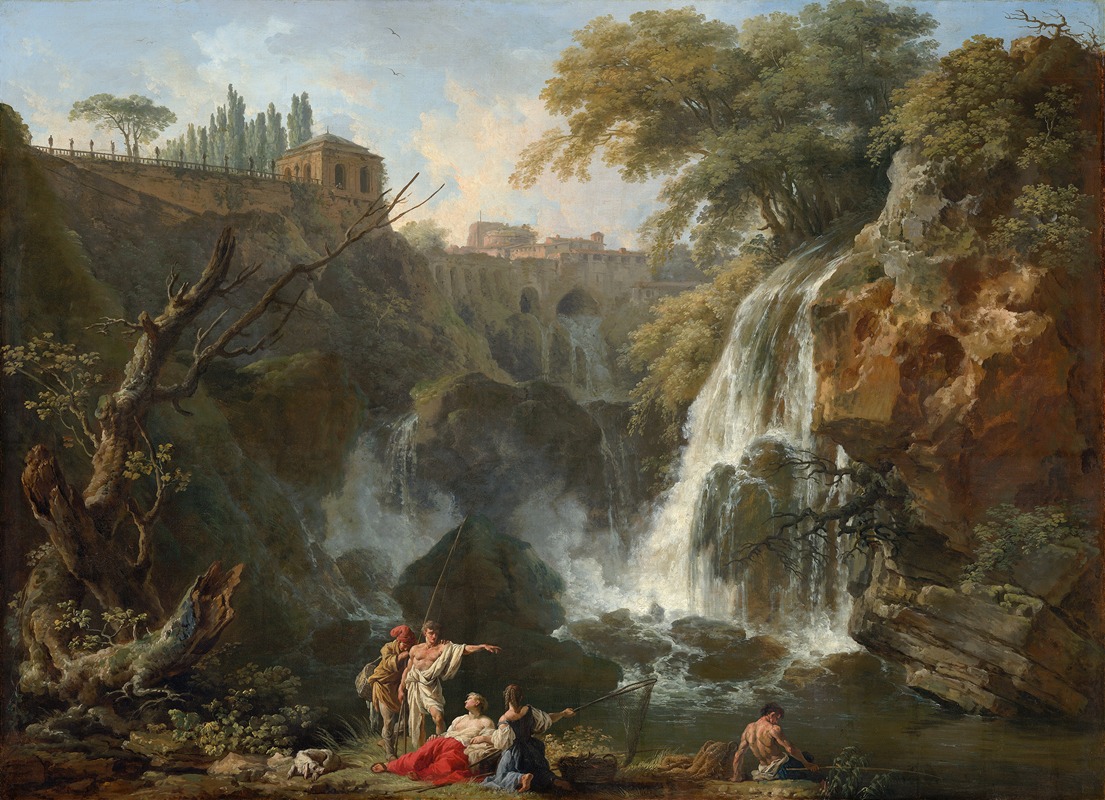
The Waterfalls at Tivoli, with the Villa of Maecenas
A hand-painted replica of Claude-Joseph Vernet’s masterpiece The Waterfalls at Tivoli, with the Villa of Maecenas, meticulously crafted by professional artists to capture the true essence of the original. Each piece is created with museum-quality canvas and rare mineral pigments, carefully painted by experienced artists with delicate brushstrokes and rich, layered colors to perfectly recreate the texture of the original artwork. Unlike machine-printed reproductions, this hand-painted version brings the painting to life, infused with the artist’s emotions and skill in every stroke. Whether for personal collection or home decoration, it instantly elevates the artistic atmosphere of any space.
Claude-Joseph Vernet's painting "The Waterfalls at Tivoli, with the Villa of Maecenas" is a notable work by the French landscape painter, who was renowned for his ability to capture the sublime beauty of nature. Vernet, born in 1714 in Avignon, France, became one of the most celebrated landscape painters of the 18th century. His works are characterized by their dramatic compositions and meticulous attention to detail, often depicting natural scenes with a sense of grandeur and tranquility.
"The Waterfalls at Tivoli, with the Villa of Maecenas" is a prime example of Vernet's skill in portraying the majesty of nature. The painting depicts the famous waterfalls at Tivoli, a town located near Rome, Italy. Tivoli has long been celebrated for its picturesque landscapes and historical significance, making it a popular subject for artists and travelers alike. The waterfalls, known as the Cascades of the Aniene River, are a striking natural feature that has inspired numerous artists over the centuries.
In Vernet's painting, the waterfalls are depicted with a sense of movement and energy, capturing the dynamic flow of water as it cascades over the rocks. The surrounding landscape is lush and verdant, with trees and foliage framing the scene. The Villa of Maecenas, an ancient Roman villa, is visible in the background, adding a historical dimension to the composition. The villa was once the residence of Gaius Maecenas, a wealthy Roman patron of the arts and a close advisor to Emperor Augustus. Its inclusion in the painting underscores the connection between nature and history, a theme often explored in Vernet's work.
Vernet's technique in this painting is exemplary of his broader style. He employs a balanced composition, with the waterfalls serving as the focal point, drawing the viewer's eye into the scene. The use of light and shadow is masterful, creating a sense of depth and atmosphere. Vernet's attention to detail is evident in the rendering of the water, rocks, and vegetation, each element contributing to the overall harmony of the painting.
This work is part of a larger body of Vernet's paintings that focus on natural landscapes and seascapes. During his career, Vernet traveled extensively, particularly in Italy, where he was inspired by the country's diverse and dramatic landscapes. His time in Italy had a profound impact on his artistic development, and many of his most famous works were created during this period.
"The Waterfalls at Tivoli, with the Villa of Maecenas" reflects Vernet's ability to blend natural beauty with historical context, creating a scene that is both visually stunning and rich in cultural significance. The painting is a testament to Vernet's skill as a landscape painter and his enduring legacy in the art world. Today, Vernet's works are held in high regard and can be found in major art collections and museums around the world, where they continue to be admired for their beauty and technical excellence.








